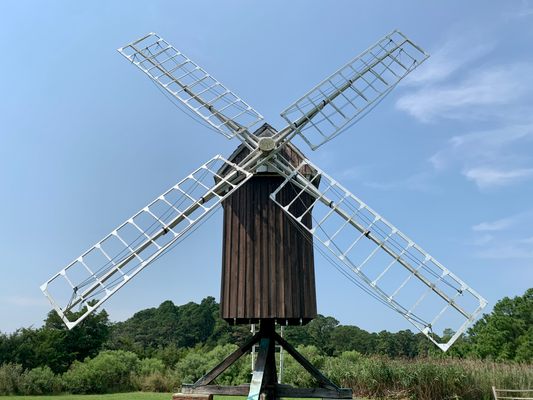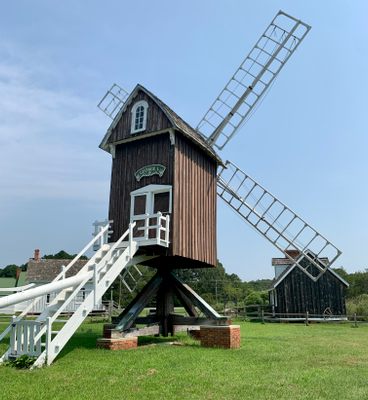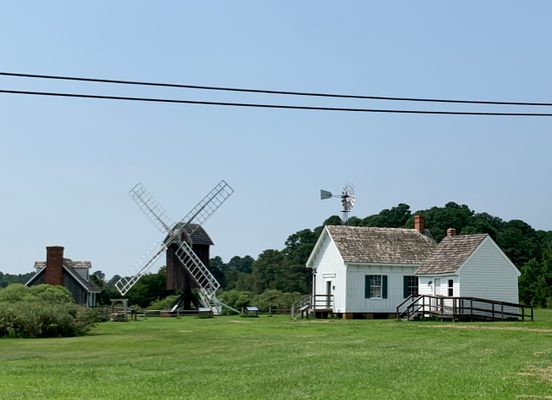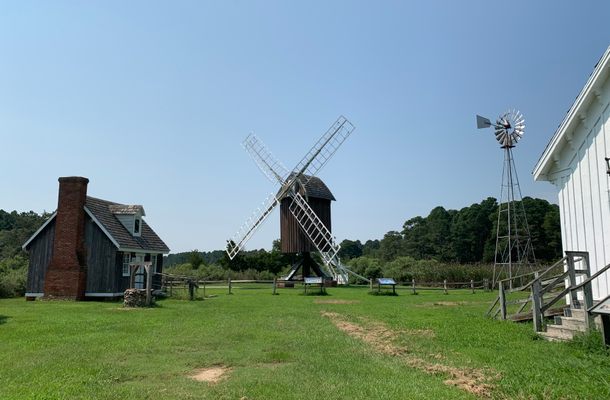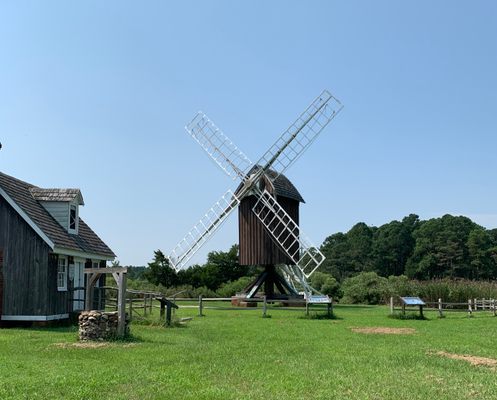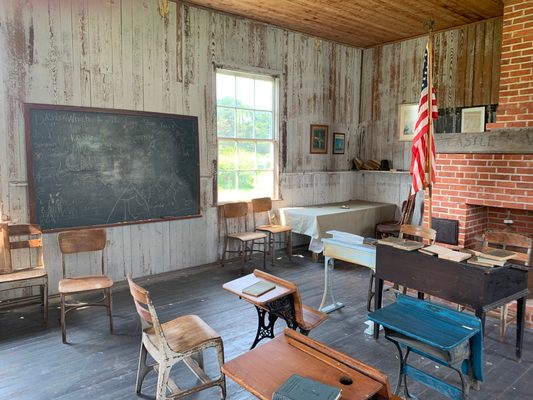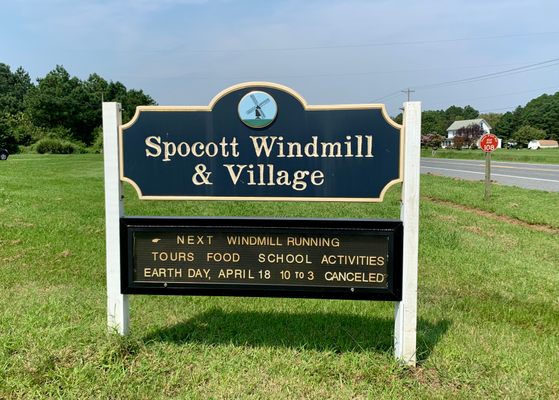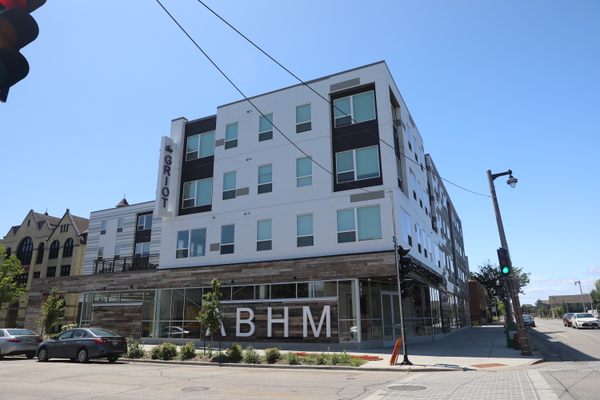About
The fanciful-looking Spocott Windmill on Maryland's Eastern Shore is an English-style post windmill. It is a reconstruction of the windmill that stood on the site in the 1800s and is the last remaining windmill of its kind in Maryland. With its housing and four long blades, the entire Windmill sits 10 feet above the ground atop a stout vertical post. This construction allows the whole building to be rotated to catch the wind. The 28-foot-long blades are designed to be covered with sailcloth, and a long tail pole extending from the back of the windmill allows someone to manually rotate the building.
John Anthony LeCompte Radcliffe constructed the original Spocott Windmill in 1852. It was blown apart during the Great Blizzard of 1888. Owing to the region's strong winds but few rivers, Maryland's coast was once littered with wind-driven grist mills. Ironically, many ultimately became casualties of the wind, with the last windmill blowing over in a hurricane in the early 1900s.
In 1972, former U.S. Senator George L. Radcliffe, the youngest son of the original builder, resurrected the Spocott Windmill. Radcliffe fondly remembered the Windmill from childhood and rebuilt it as a memorial to his father. Master boatbuilder James B. "Mr. Jim" Richardson was hired to reconstruct the mill using parts salvaged from the original, including the staircase and 700-pound grindstones. Like the original, wood planks for the board-and-batten building were cut from local trees. Because there were no blueprints, Richardson worked from old photographs. At its opening, the structure was named "George L" in honor of its founder.
The site of the Windmill is now a small history museum depicting life in a village on the Eastern Shore in the 19th and early 20th centuries. Buildings added to or restored on the property are the 1939 Lloyd's Country Store and Museum, a blacksmith's shop, the Muse-Lecomte doctor's office, the 1870 Castle Haven one-room Schoolhouse, and the Adaline Wheatley House. The latter was the home of a free black woman born in Spocott in 1847. Wheatley worked as a cook and caretaker for the Radcliffe family and raised seven children in the tiny cottage. All the buildings contain period furnishings.
The Spocott Windmill Foundation maintains the property and twice annually operates the windmill for grinding. However, the structure could once again become a victim of climatic forces. The area around the Windmill grows softer from sea level rise, so it now takes more than one person to rotate it on the spongier ground. Estimates are that within 75 years, nearby Gary Creek could swallow the Windmill and much of its property. The decision before then will be whether to move the Windmill or risk losing it again.
Related Tags
Know Before You Go
The property and most buildings are open 365 days a year from dawn to dusk. Admission is free.
Community Contributors
Added By
Published
February 9, 2023
Sources
- https://www.bayjournal.com/travel/set-sail-to-turn-back-in-time-at-spocott-windmill-village/article_574618ea-21ca-11ea-9a94-f773f73da752.html
- https://www.pewtrusts.org/en/research-and-analysis/issue-briefs/2019/11/marylands-living-shorelines-help-communities-become-resilient
- https://visitdorchester.org/50-years-of-the-spocott-windmill-how-it-all-began/
- https://www.americanheritage.com/content/richardson-maritime-museum
- https://www.hmdb.org/m.asp?m=4000
